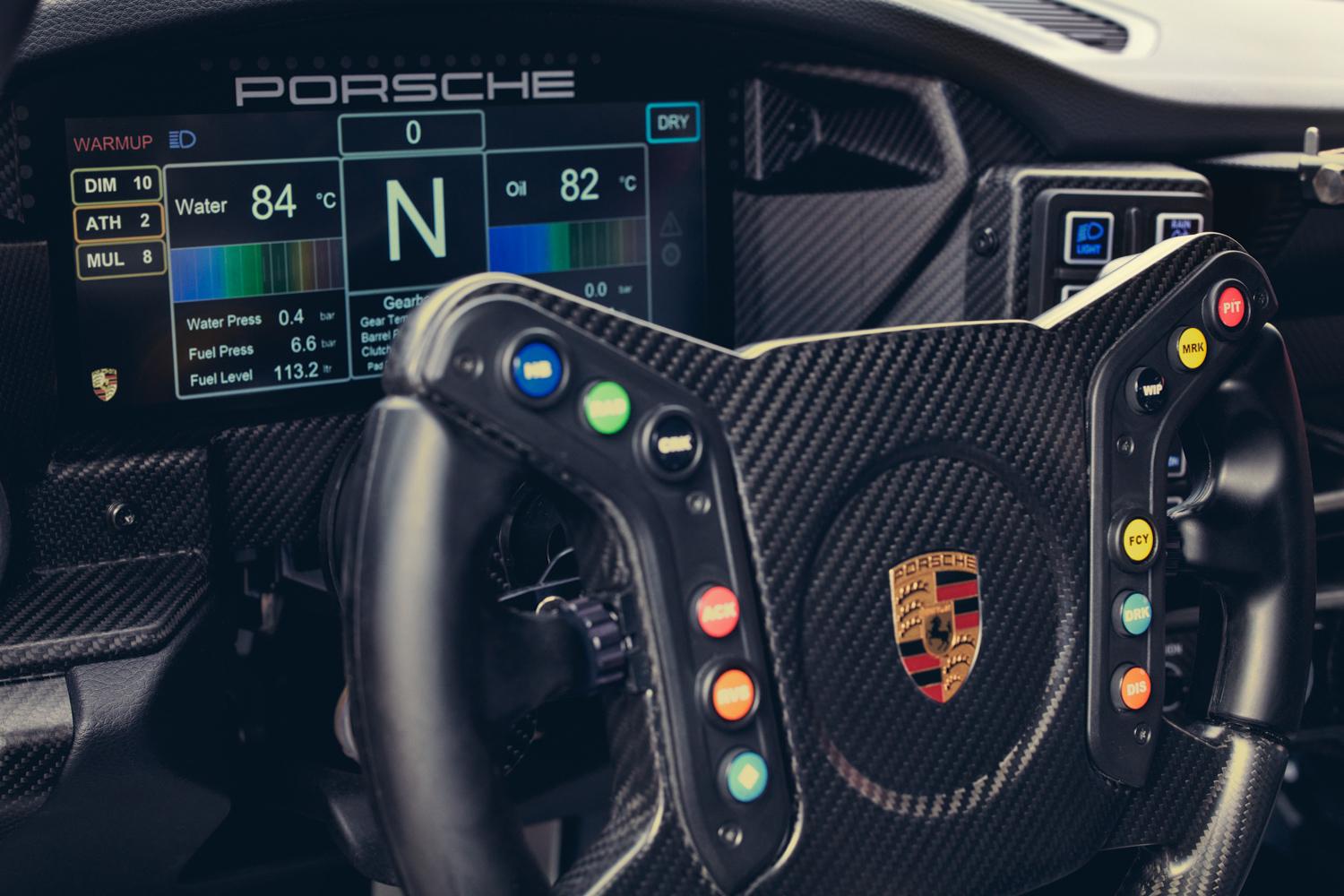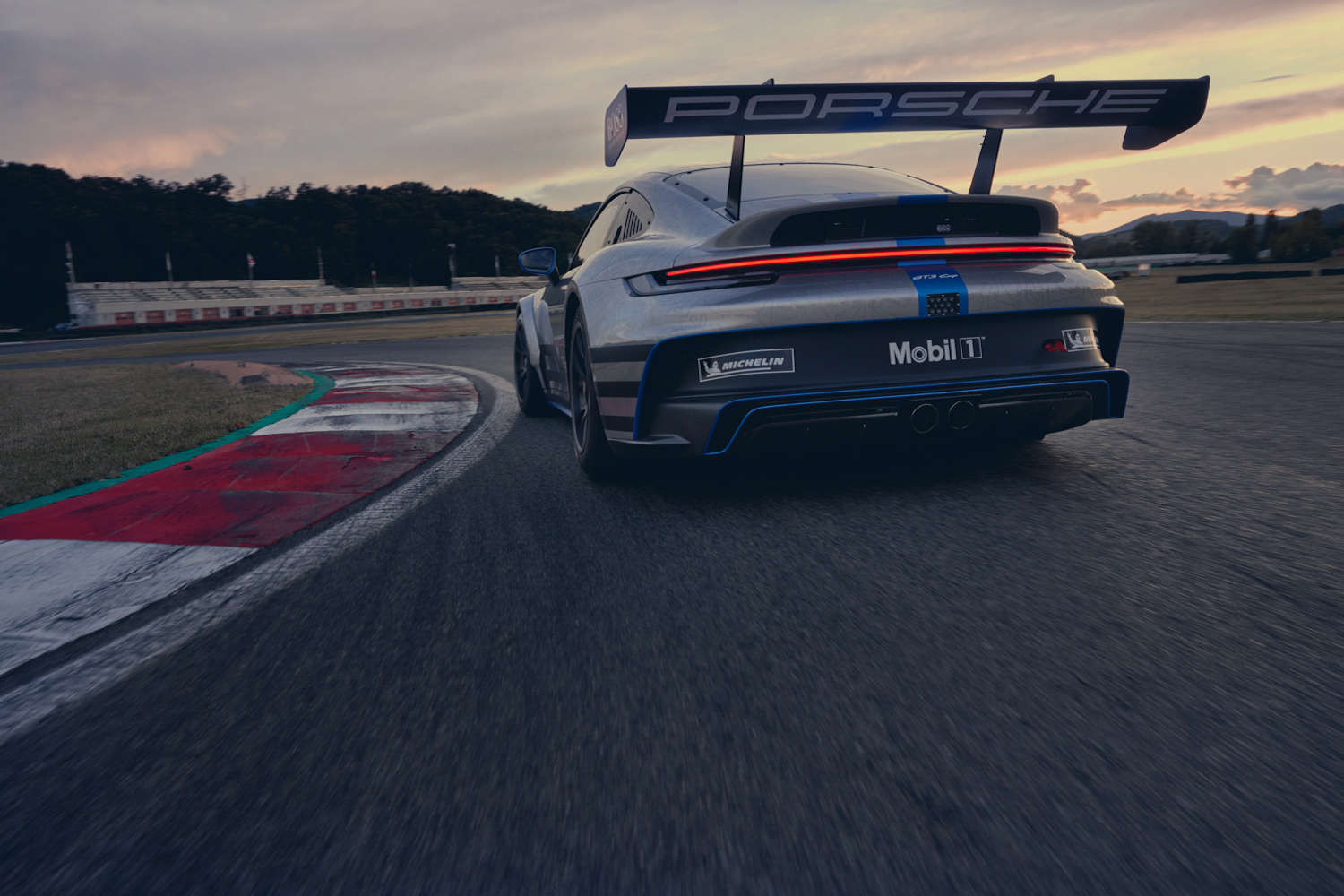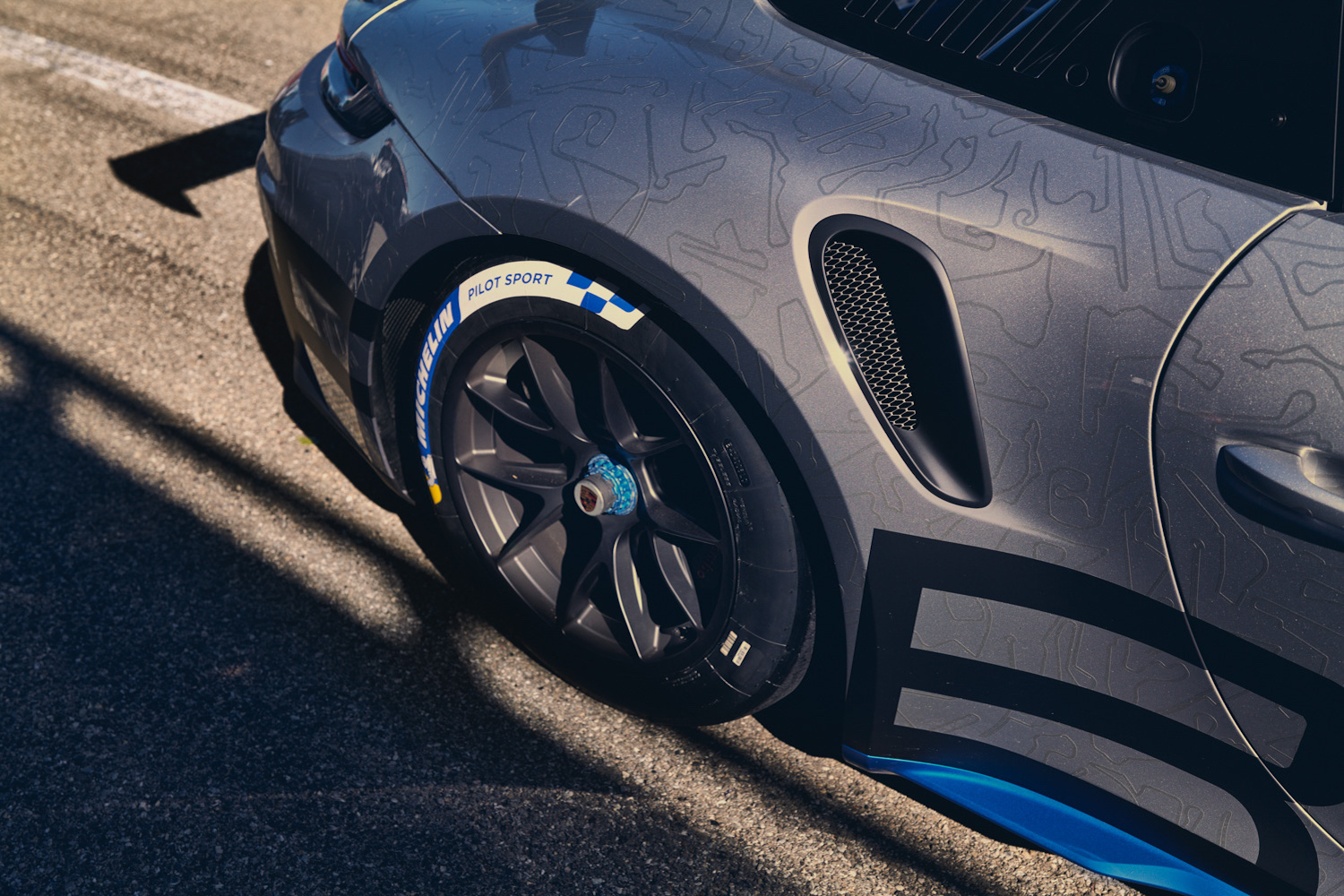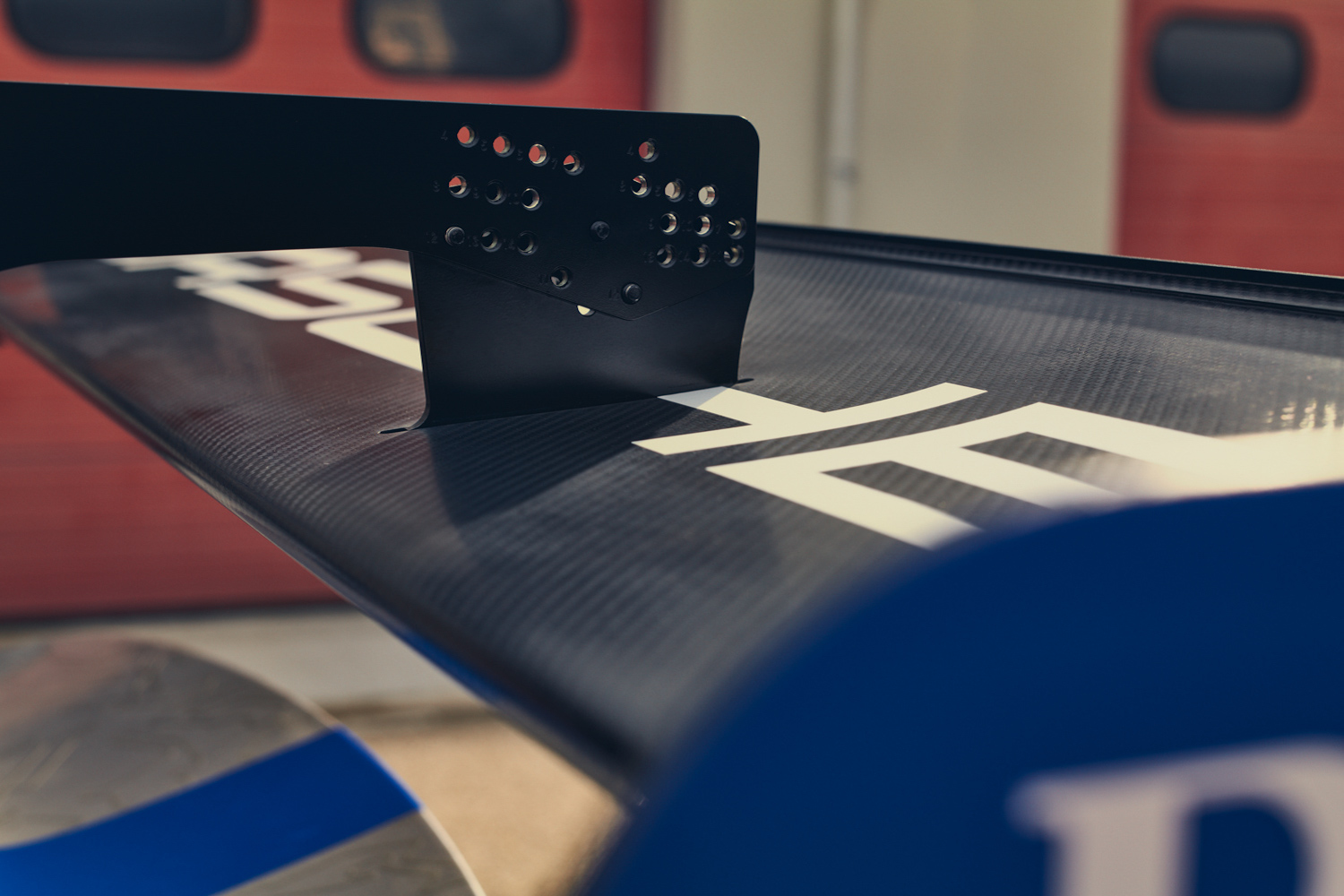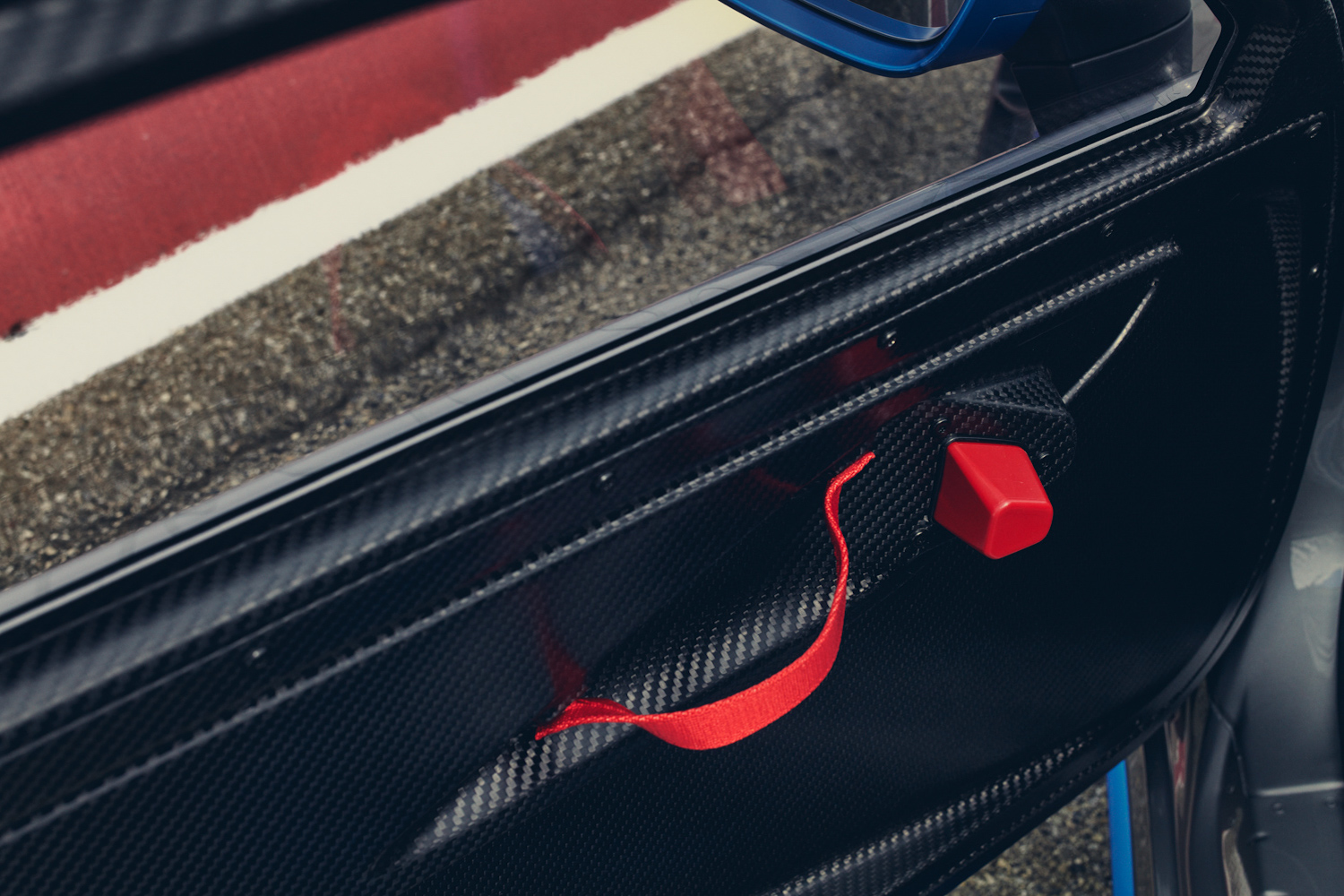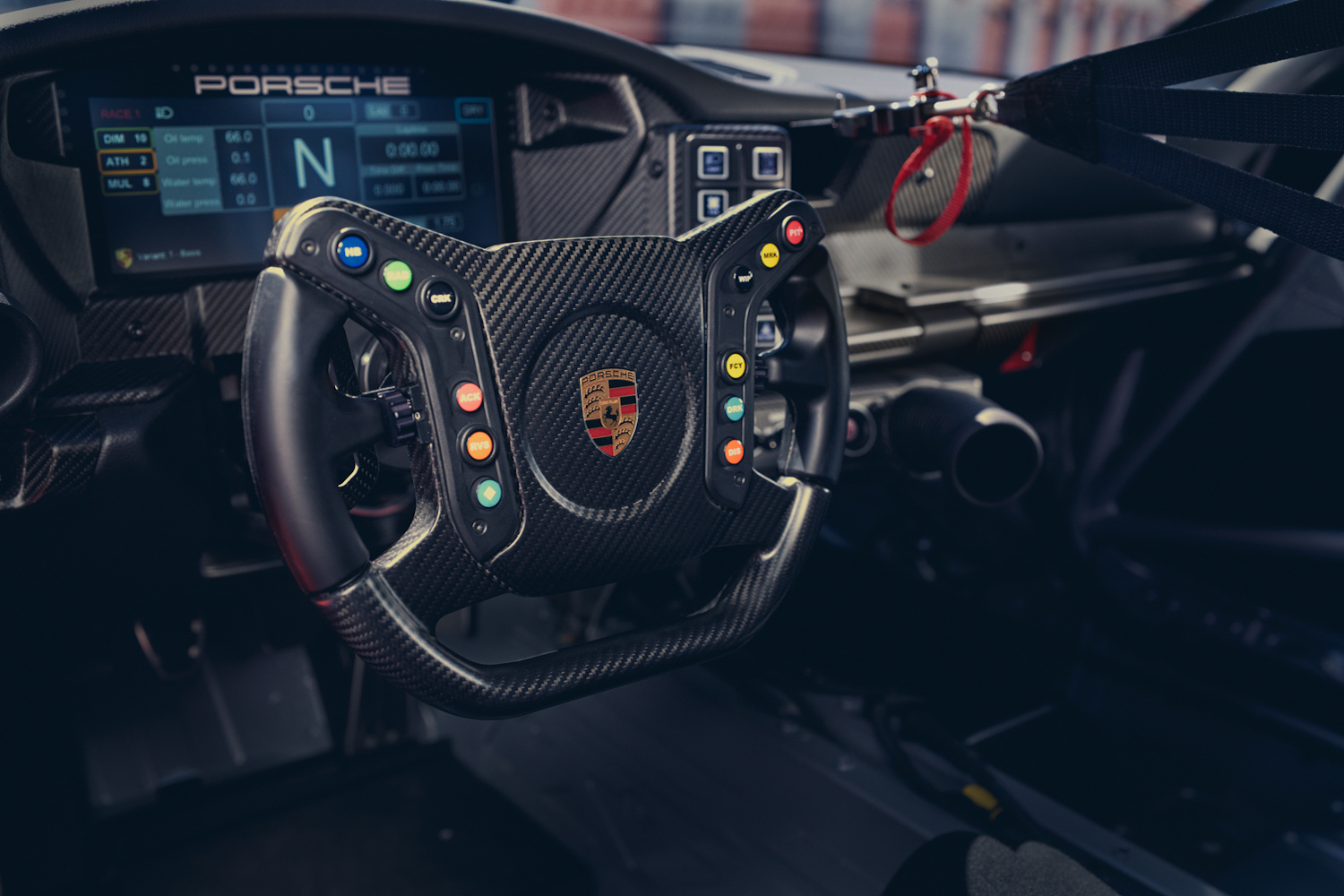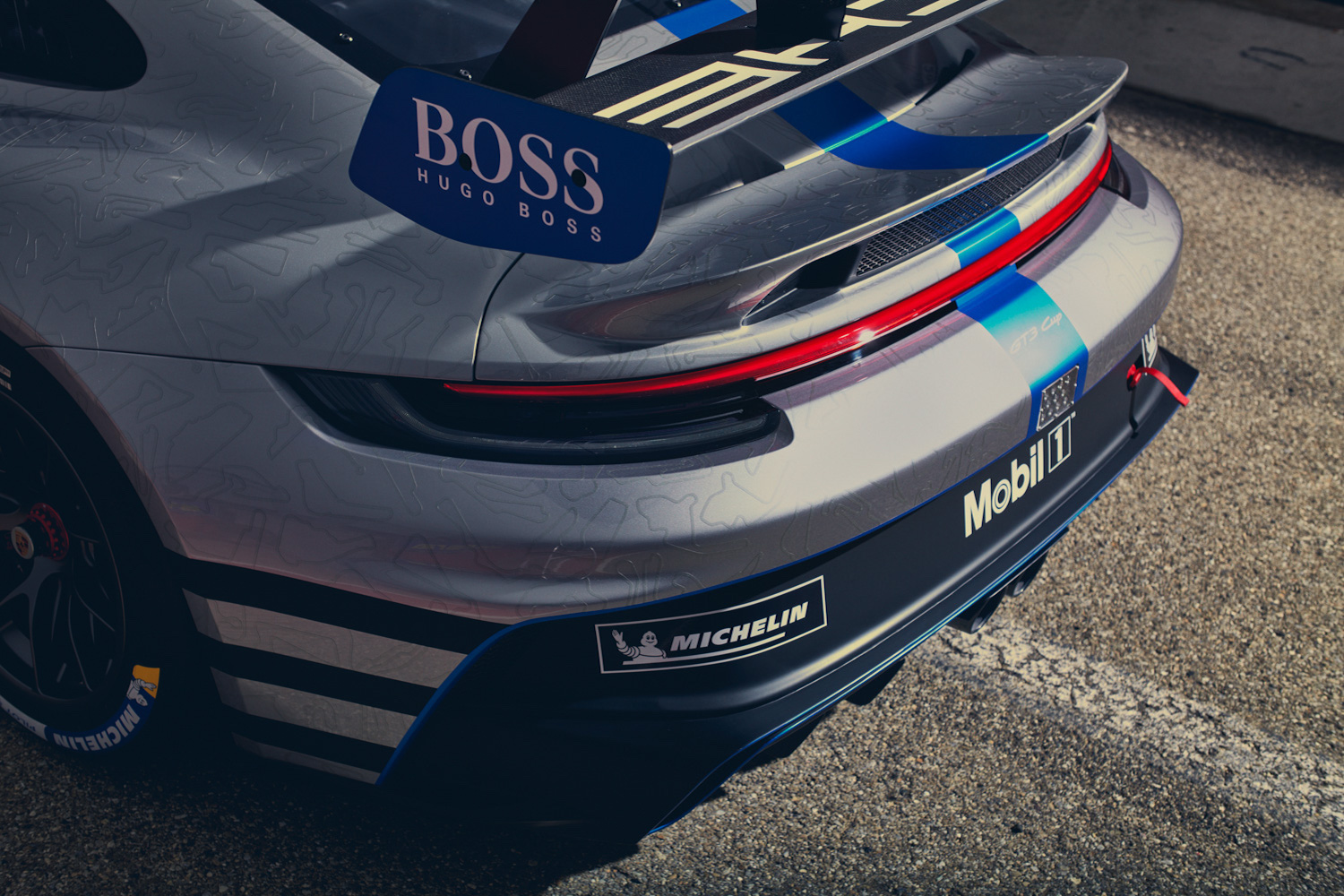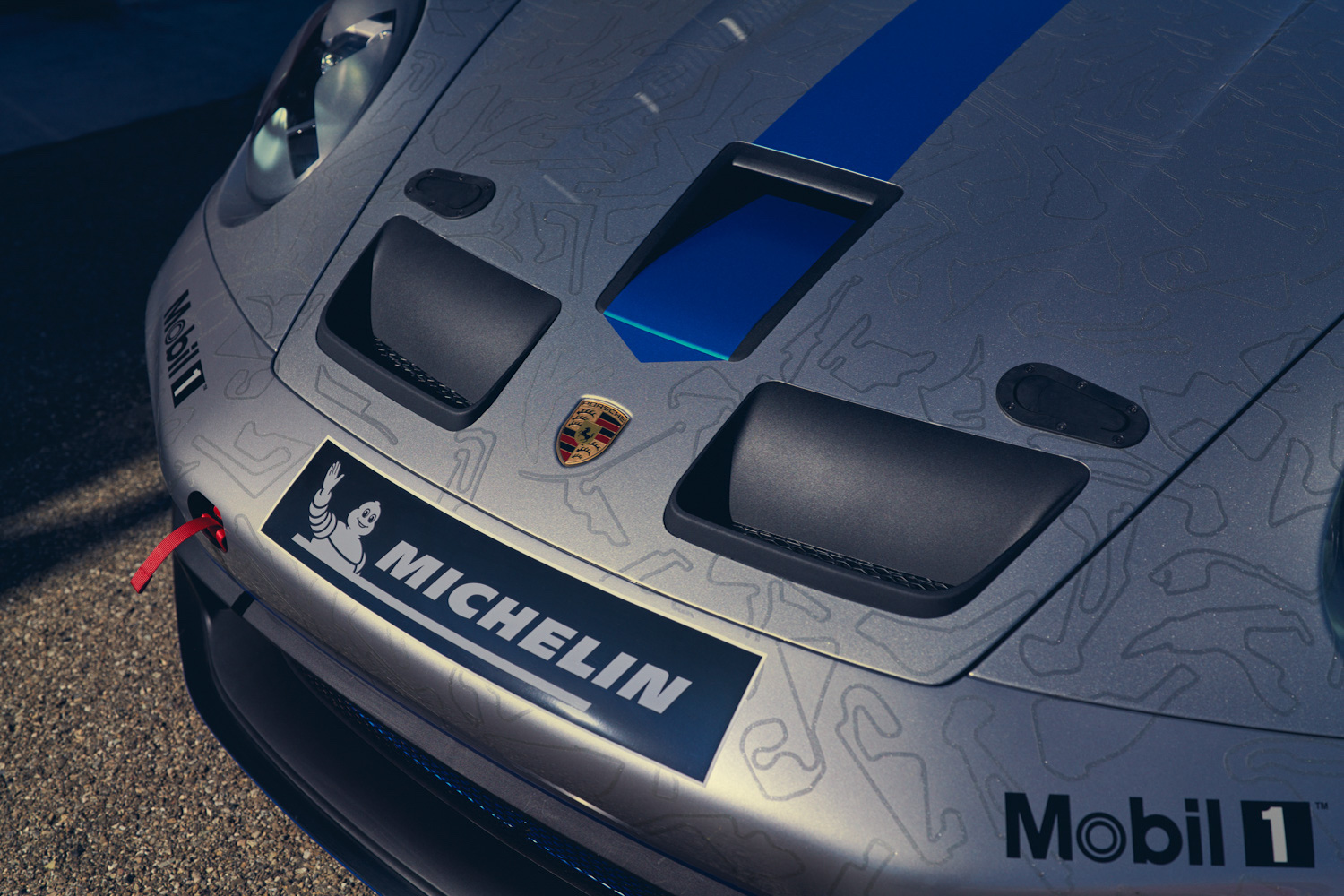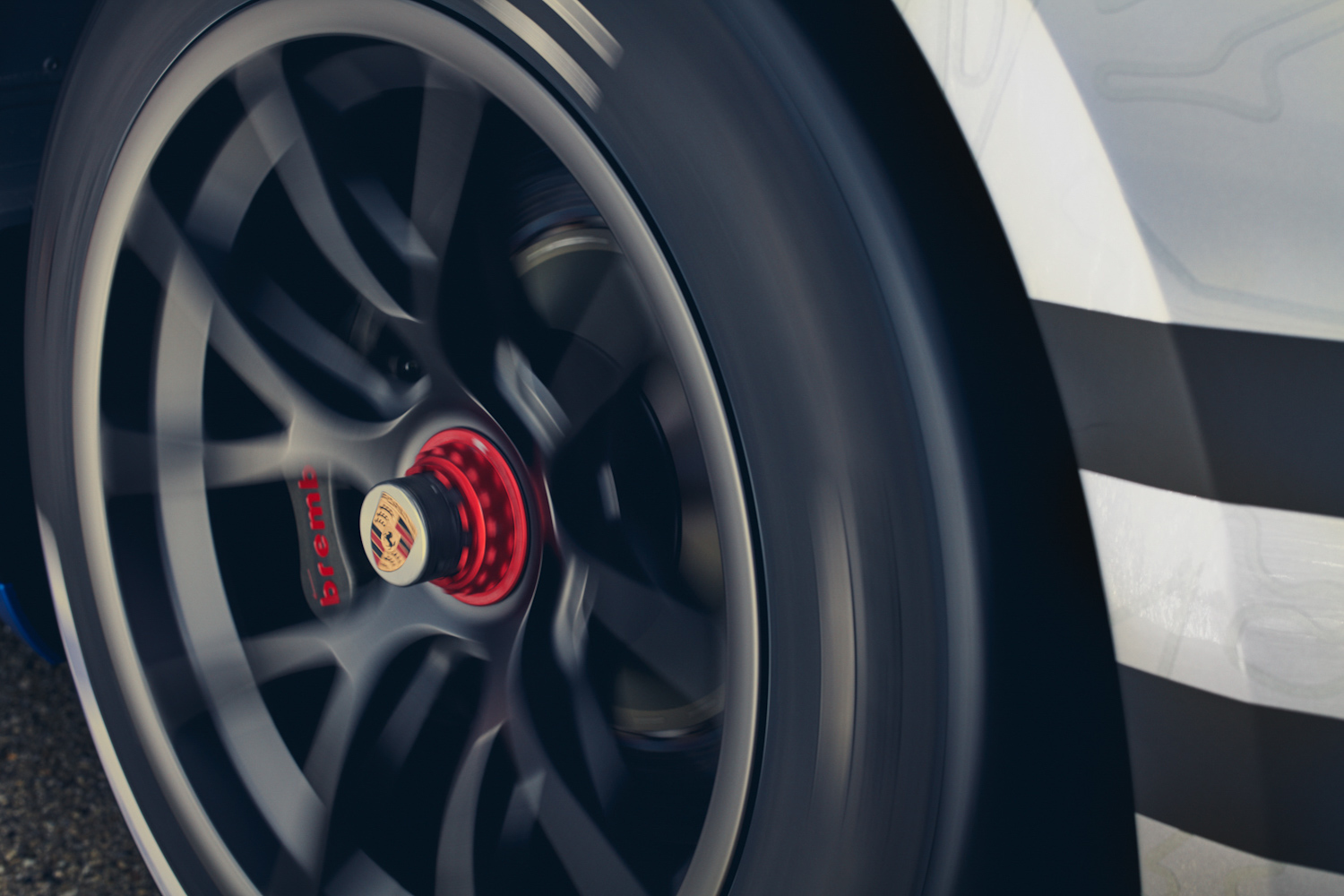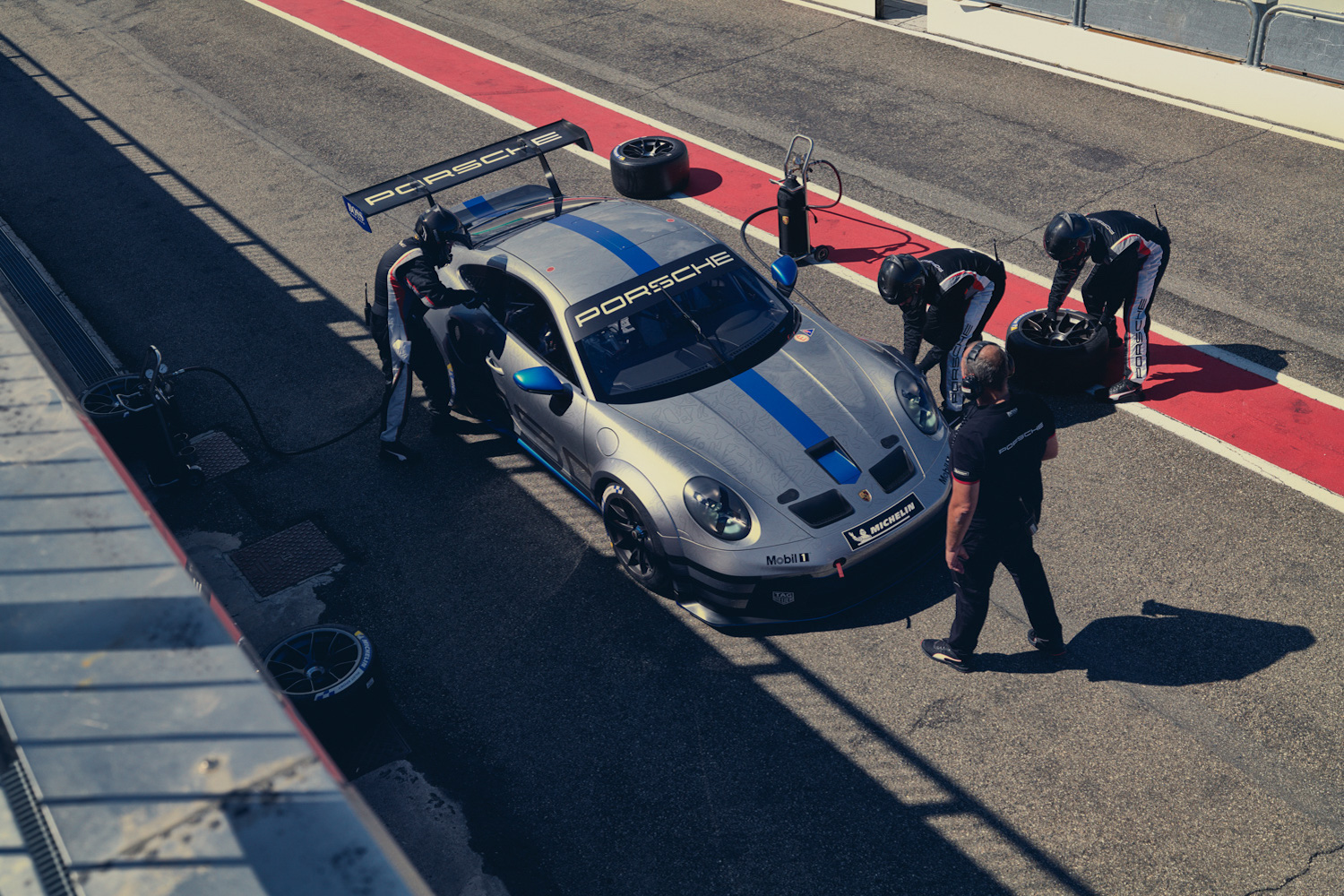Porsche 911s were born to go racing, ever since that 1963 original, and the current 992 edition is no different. For those who fancy a slice of 911 racing, but aren't quite ready to step up to a full-on GTE RSR Le Mans campaign, there's a plethora of national championships for 911s, and this new 911 GT3 Cup is the new racer for those races.
Global Porsche Supercup championships
The new 992 GT3 Cup will be the official steed of the Porsche Mobil 1 Supercup as well as the national Porsche Carrera Cups in Germany, France, Asia and Benelux and for the first time in North America.
The very first 911 Cup car was launched in 1990, based on the 964-edition of the 911, and had a mere 260hp from its flat-six engine. The new 911 GT3 Cup develops a rather more robust 510hp and can even run on synthetic fuel, such as the new 'e-fuels' that Porsche has signed an agreement with Siemens to make in Chile.
The latest 911 Cup is the fifth generation Cup car, of which 4,251 have thus far been made since that 1990 original. "The 911 made history as the baseline model for the Carrera Cups and the Porsche Mobil 1 Supercup - no other racing car has found as many satisfied customers since 1990 as the 911," states Michael Dreiser, Director Sales Porsche Motorsport. "The new 911 GT3 Cup now starts a new chapter. Our goal is to pass the 5,000 mark in production over the coming years. Like its ancestral lineage, this model will also assist a whole new generation of talented racing drivers on their path to professional motorsport and shape the face of our customer sport commitment around the world."
Development started in 2018
Development on this new 911 GT3 Cup started as far back as 2018, and the focus since then has been to give a bigger bang for the racers' buck, by making the car faster and more agile, but also more reliable and rugged. "We wanted to position the new 911 GT3 Cup even more as a professional racing car, while also making it more cost-effective for the teams to run," explains project manager Jan Feldmann. "We were particularly successful in achieving this thanks to its striking appearance, the improved suspension and intelligent solutions for electrical details. The handling of the new 911 GT3 Cup is noticeably more precise and even more fun. With its improved performance and the optimised cockpit, it's the best Cup car that Porsche has ever built."
For the first time, the 911 GT3 Cup actually uses the wider body from the road-going 911 Turbo, which at 1,920mm is 28mm wider than the old Cup car, and has Turbo-style air intakes ahead of the rear wheels. It has a wider front track, too, and has more optimised aerodynamics, with wheelarch flares that can cope with 12-inch width tyres at the front, and 13-inch at the back.
Downforce has increased, thanks to the combination of the rear spoiler with the larger rear wing and front apron, which was specifically adapted to racing by means of a front lip spoiler and strategically-positioned separation edges. The eleven-stage adjustable rear wing with a 'swan neck' mounting ensures uninterrupted under-wing airflow. This improved aerodynamic efficiency also ensures more stable handling, especially in fast corners.
The body of the car is now 70 per cent aluminium and 30 per cent steel (the old Cup car had that ratio reversed) and while the dry weight has increased by 35kg to 1,260kg, that's because the safety cage has been beefed up. There's an escape hatch in the roof, and all of the windows are made of scratch-resistant polycarbonate. The doors, engine cover, and rear wing are all made of carbon-fibre reinforced plastic (CFRP), but the bonnet is made of aluminium. Why? Because it's easier to fix if you have a prang... Equally interestingly, the (vulnerable) radiators are mounted behind the front bumper to discourage overly aggressive driving...
Inside, the racing seats adjust for height as well has having a moving backrest, and the steering column adjusts too. The padding of the seat can be customised, and there's a multi-function steering wheel that has a missing top strut for a more F1-style look to the cabin. The so-called Rubber Switch Panel (RSP) with its ten large buttons on the right is reminiscent of a control element in the Porsche 919 Hybrid. These buttons are easy to use, even in the heat of the race and are given designated central functions such as lighting and ventilation or to change tyre settings from dry to wet tyres. You can also adjust the brake balance.
In the centre of the dash is a 10.3-inch colour screen, which displays vital data such as engine revs are water and oil temperatures, the gear currently engaged and error messages or information on important baseline settings, such as "wet" for racing in rain. The same information is transmitted in real-time to your race engineer on the pitwall.
Switchable traction and ABS
Interestingly, the 911 GT3 Cup has anti-lock brakes and traction control installed into its software, but they can be switched off - and indeed have to be switched off according to the rules for the Porsche Mobil 1 Supercup and in most national Carrera Cups. The potential for rule-bending just took a big step up...
In suspension terms, the GT3 Cup uses basically the same rear end as a production 911, but up front the front wheels are now controlled by double wishbones and Uniball bearings, based on experience with the Le Mans-spec 911 RSR. The suspension dampers, too, have been inspired by experience with the 911 RSR and the 919 Hybrid, while the steering has been simplified by switching from hydraulic assistance to electrical.
Now, to the engine. It's a flat-six, of course, pumping out 510hp at 8,400rpm, and 470Nm of torque at 6,150rpm. There's a dry-sump oil system, of course, plus a single throttle butterfly system. There are three different exhaust systems to choose from, depending on the noise regulations for each series, but whichever you choose, Porsche says that the noise the engine makes is 'awesome.'
Porsche also says that the engine only needs an inspection every 100 hours of racing, and the sequential gearbox (a six-speed with paddle-shift) needs a 'minor inspection' every 60 hours, and a major overhaul every 120-hours. That 60-hour minor inspection should cover, on average, two full seasons of Porsche Mobil 1 Supercup action.
Each 911 GT3 Cup comes with a complete accessory kit, which includes, for example, all special tools and wishbone spacers required for track adjustment. Hence, the ex-works 911 GT3 Cup is ready to race without customer teams having to order these parts individually.



